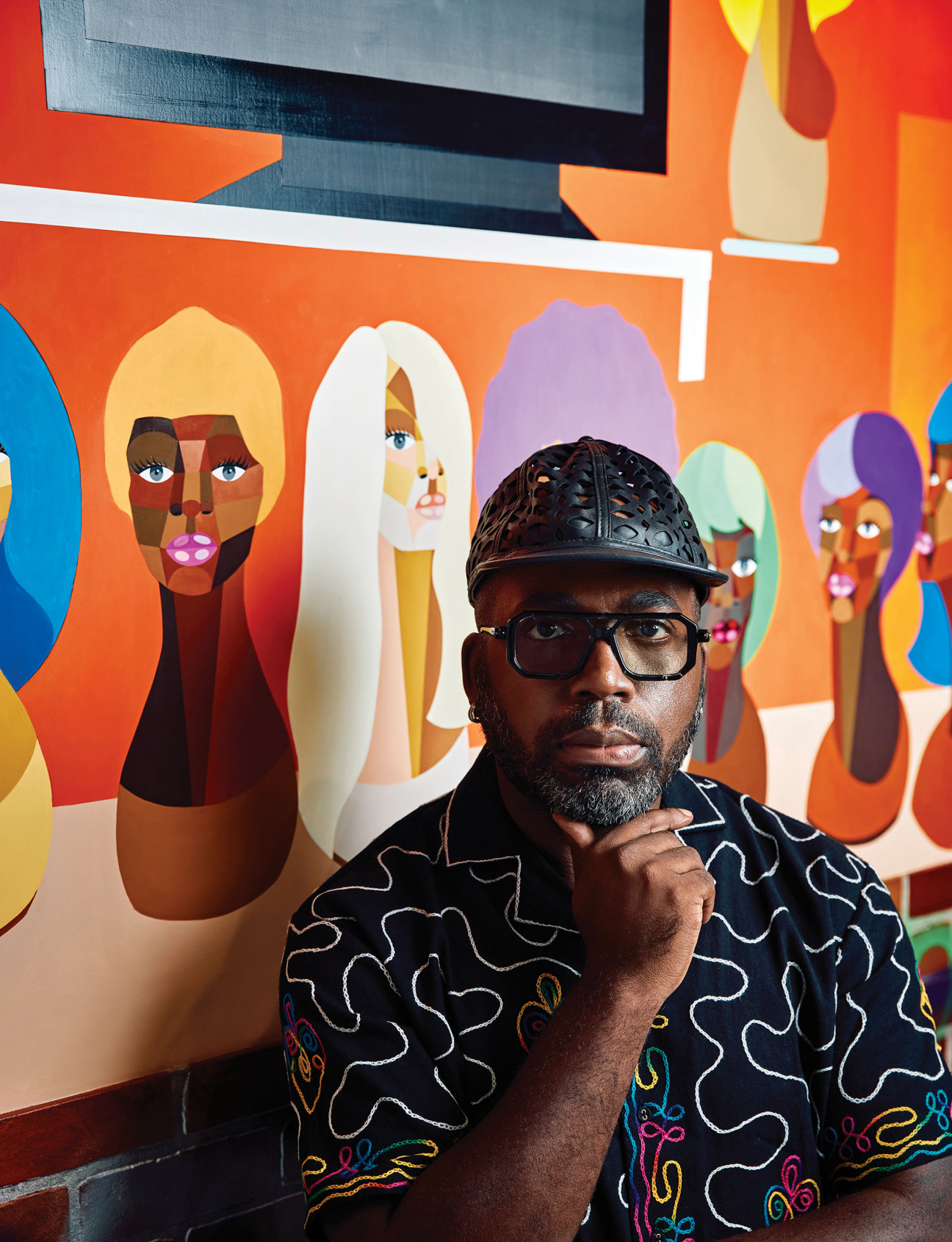
The watch was uniform in color—black with a silver case, hands, and single dot topping the face, as if the sun had just reached high noon. When the Movado Museum Classic became the first dial to enter the collection of the Museum of Modern Art in 1960, Nathan George Horwitt’s design entered the canon of midcentury minimalism. Sixty-five years later, artist Derrick Adams is reimaging the timepiece for our era.
His is the latest in the Swiss watchmaker’s Artist Series. In the late ’80s, Movado inaugurated the project with the patron saint of Pop art, Andy Warhol, who splashed a black-and-white photo of New York across five interlinking watch faces. Collaborations with the likes of Proenza Schouler, Kenny Scharf, and James Rosenquist followed, each epitomizing the artistic tides of time.
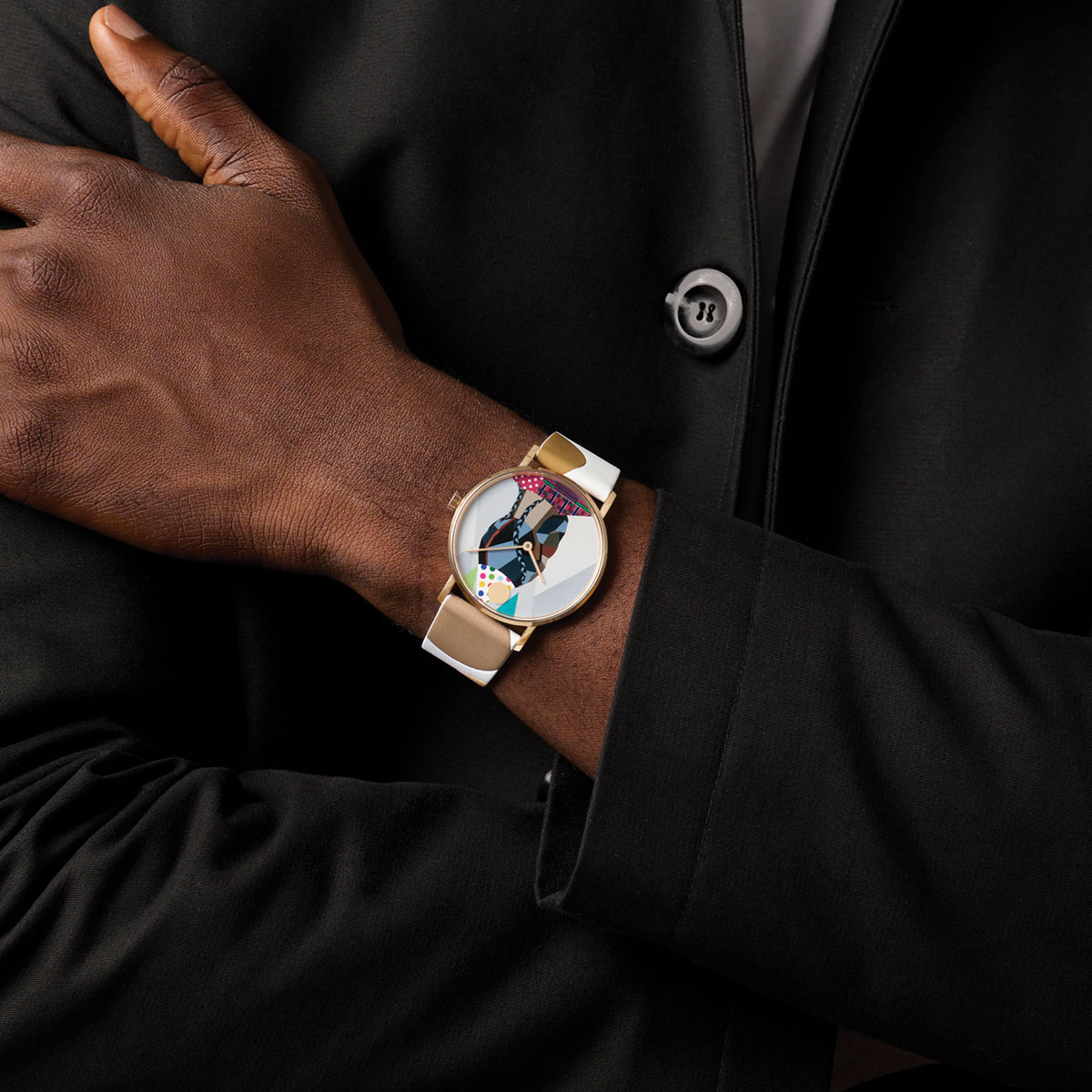
For this year’s edition, Adams has invited a suite of his signature Cubist-inspired portraits onto five sleek 40-millimeter watches, washing or dotting the straps in harmonizing swaths of high-octane hues, as well as two wall clocks and a collector's set.
“With his employment of distinct geometric shapes, bold prismatic colors, and fantastically intricate patterns, Derrick creates a visual language which is dynamic and iconographic,” says Studio Museum in Harlem Director Thelma Golden, a regular collaborator of Adams’s who first encountered his work when she included him in the institution’s 2003 show “Veni Vidi Video.” “It only makes sense that his artwork be displayed on a watch that can live up to these same qualities.”
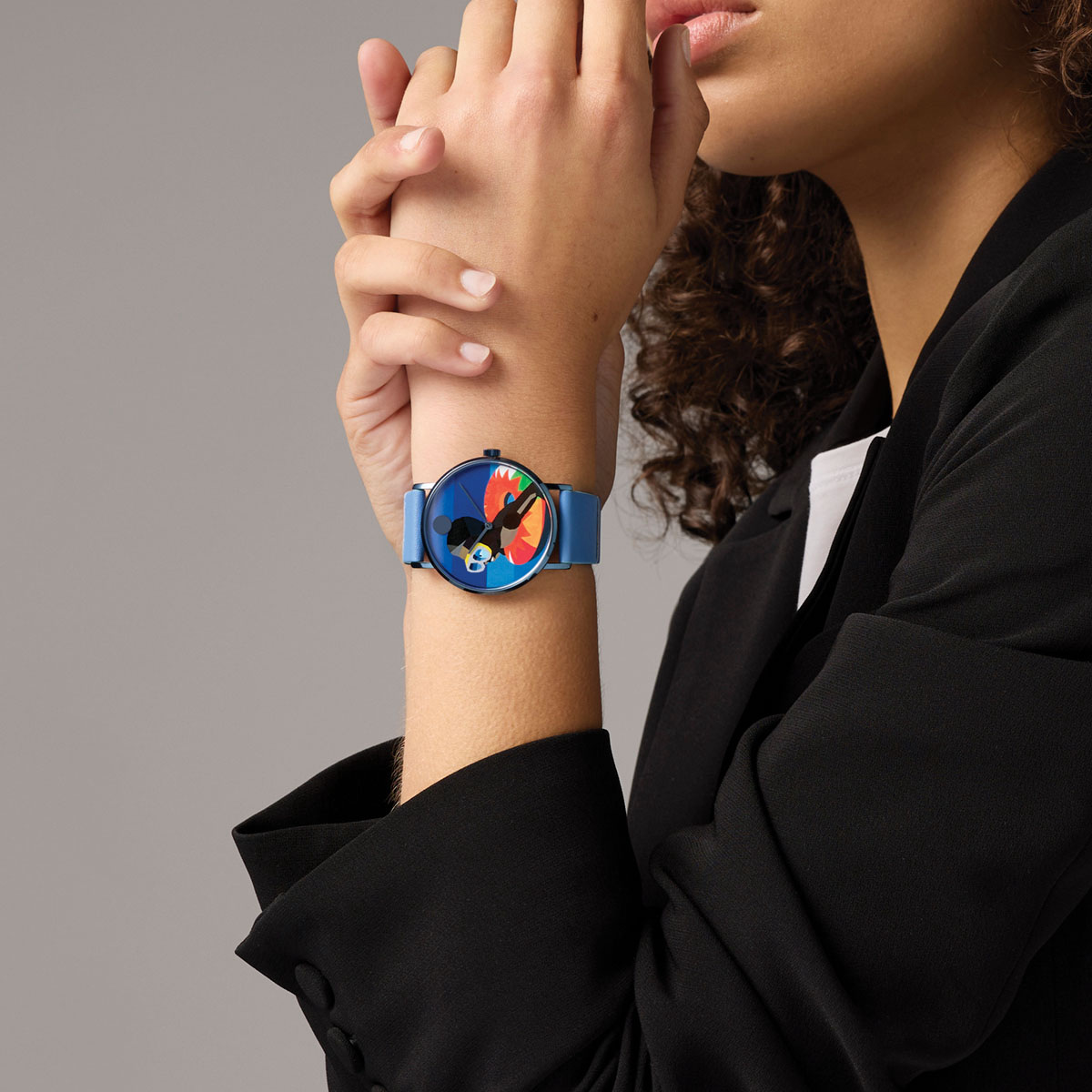
Indeed, Adams has a long history of setting a new standard with his irreverent practice. His depictions of Black joy and leisure have disrupted art-historical iconography for over two decades. Since his early inclusion in the Studio Museum group show, the Baltimore native’s work has traveled around the world, injecting the artist’s signature whimsy into spaces as disparate as a Long Island Rail Road station in Brooklyn and the Fondation Louis Vuitton in Paris.
For Movado, a piece from one of Adams’s most well-known series, “Floaters,” capturing a day spent in the water, gets miniaturized, transporting wearers into the balmy insouciance of summer with one flip of the hand. Another featured work, Fashion Fair, dives further into abstraction, its blocks of color extending into the watch’s strap like a chromatic timeline.
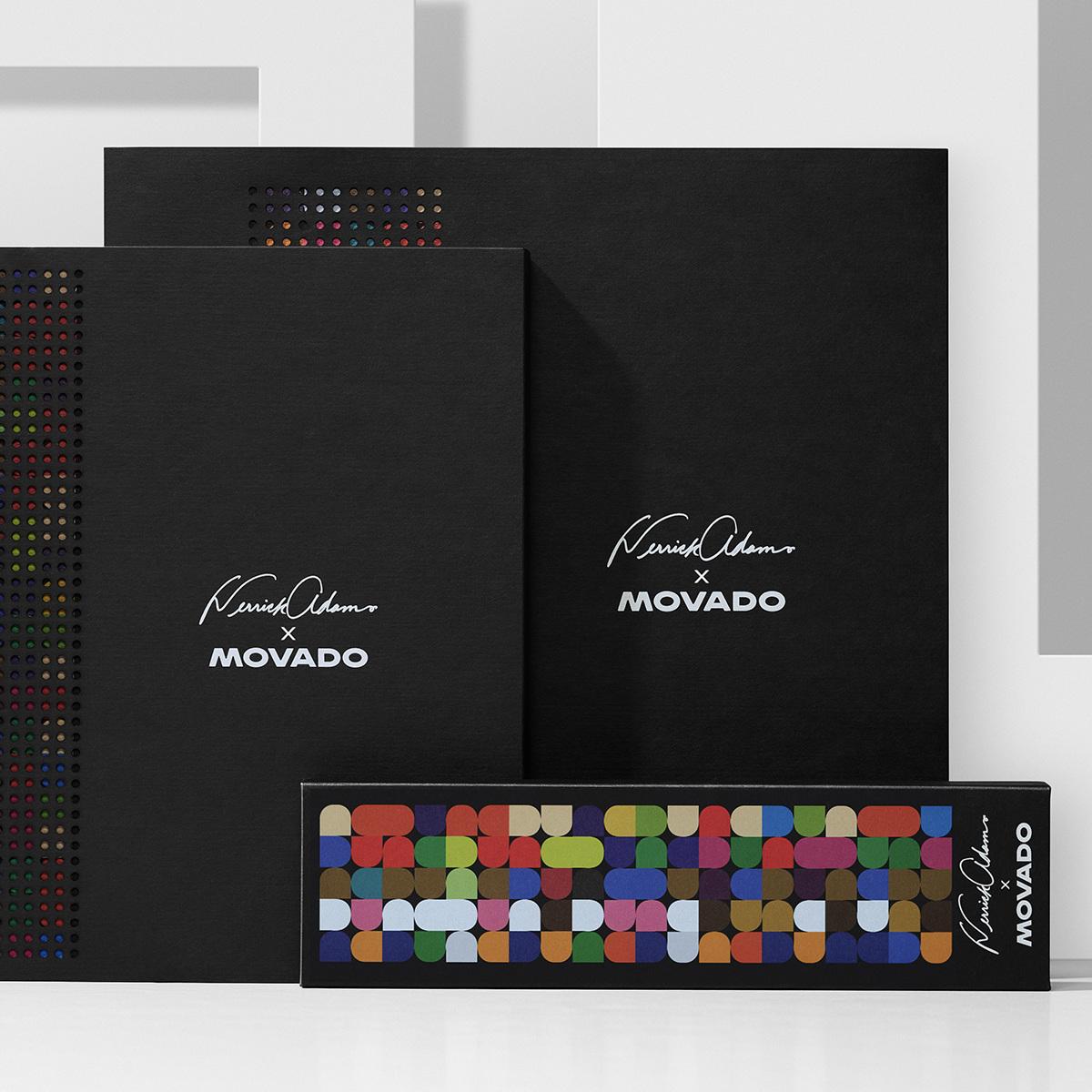
Each model is finished with a bespoke stainless steel caseback, leather strap, and presentation box evoking Adams’s ebullient universe. Across the watches, clocks, and collector's set, only 125 numbered editions of each have been produced.
For Thelma Golden, the extension of Adams’s visual language into the accessory space is an investment in more ways than one. “To have his work depicted on these watch faces,” she concludes, “is to be able to carry a piece of art history with you every day.”



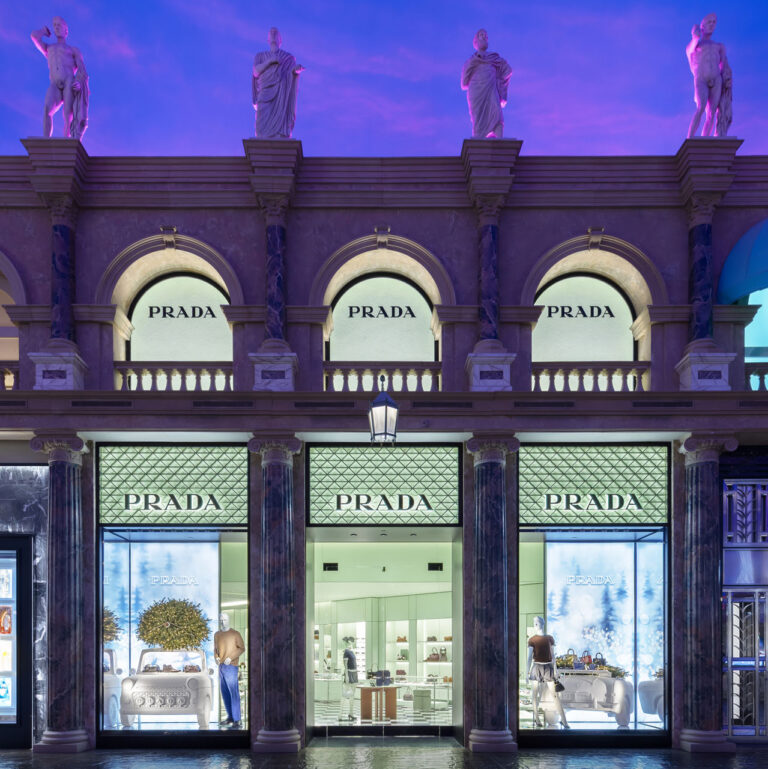






 in your life?
in your life?

